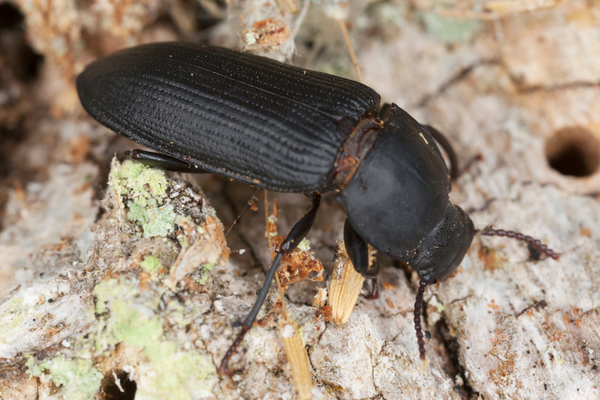The lifecycle of a mealworm
To make the most of a mealworm growing pod, it is important to fully understand the lifecycle of a mealworm. Once you get your head around it, you will know when you need to move your beetle tray to a new pod and when your mealworms are at their most juicy for your pets.
Mealworms have four stages to their lifecycle ending up as a beetle.
The secret is that mealworms are not the final stage of this insect, in fact, they are just the larvae of the darkling beetle. But, for your pets, the beetle has no value except to produce more larvae for their consumption!
Each stage of the cycle is key to maintaining a steady supply of mealworms for your pet. As it is a cycle, you can pick it up at any point. For the sake of logistics, its usually easiest to start your cycle with mealworms. But it really comes down to the age old question, what came first the chicken or the egg?

Egg (Stage 1)
So, let’s start at the beginning of life. Each female beetle will lay anywhere between 100-500 eggs a few days after mating. These eggs will be tiny, white/yellow ovals and in our growing pod they will fall through the holes in the beetle tray. These eggs will sit there for between 1-4 weeks before they will be visible as larvae.
Larvae... AKA Mealworm (Stage 2)
Now we have our precious mealworms. They will crawl around eating and growing whilst shedding layers of their outer skin and leaving droppings. You might be thinking, ‘gross’ but don’t throw this away because it is actually very useful and is called frass. Frass has all the nutrients needed by plants, but also an extra compound, chitin, that activates plant defence systems and increases resilience.
During the first cycle you will want to allow all of these larvae to pupate into beetles to get your continuous supply of mealworms. Once you get to the second cycle of larvae, you will can feed as many as you like to your pets, but lets a few turn to pupae to keep your breeder beetle population going.
The mealworms will stay in this larvae form for around 8 to 10 weeks before they grow too big for their final layer (exoskeleton) and shed this, moving onto the next stage.
Pupa (Stage 3)
The mealworm larvae will appear to curl up and harden. You would be forgiven for mistaking them for dead but fear not, this is all part of their lifecycle. They will be pretty inactive at this stage, but when you pick them up they should wriggle. It is when they turn to pupa that you will need to move them over to the higher level of the beetle tray in the mealworm growing pod.
At the start, the pupa will be pale in colour but should develop into a brownish yellow over time. Depending on different factors this stage can last from under a week up to 3. Though they may not seem very lively, the magic is all happening inside.
Beetle (Stage 4)
Finally, in the final stage of the lifecycle, the beetle will hatch from the pupa. At first, the beetle will appear light in colour, but it will soon change into a dark brown and finally a black beetle. During this stage they will be the most active, running around, feeding and mating.
Mating is key to our cycle as this is how we end up with more mealworms. After 1-2 weeks the beetles will have reproduced and laid the eggs. The beetles can go on to live from up to 3 months to a year, continuing to provide you with more mealworms. Just be sure to remove any dead beetles from your tray.

Factors
It is important to be aware that the timings for each stage are estimates. It is very difficult to be precise on exactly how long each stage will last because it is dependant on a lot of different factors.
The temperature that pods are kept at will have a significant effect on the speed of the lifecycle. If they are kept at a warmer temperature, this should speed up the cycle, and colder should slow it down. The ideal temperature to raise mealworms is between 25-28 degrees celsius. Try not keep them at temperature much higher or lower or they can die.
What you feed the beetles and the larvae will also have an impact on the timings of each stage. If you are feeding them organic food waste, like your veggie cut offs and and an organic feed designed to naturally boost growth, then not only will you have bigger mealworms, but the cycle will probably be faster.
Are you ready to create your own mealworm cycle? Give it a go!

